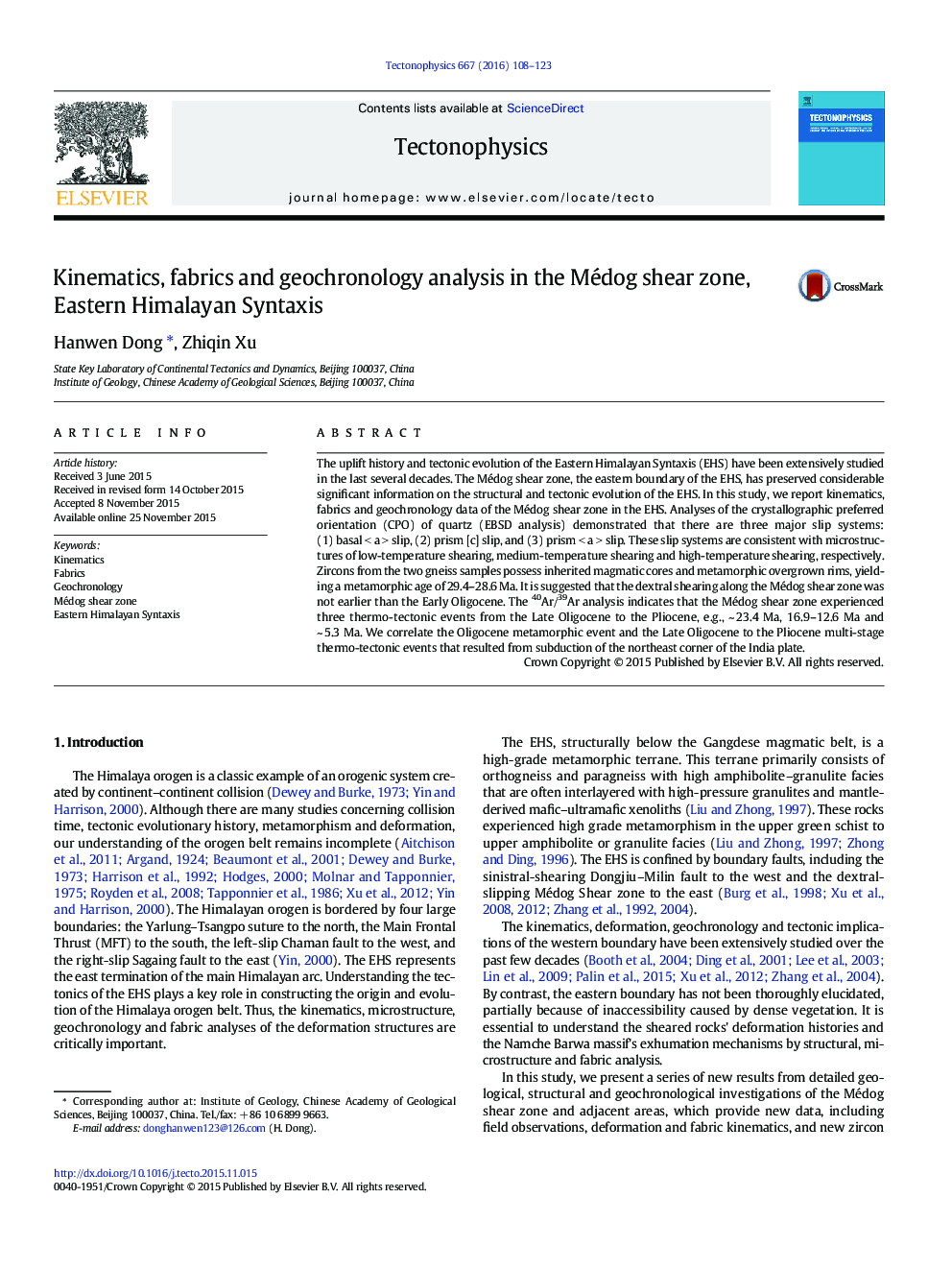| Article ID | Journal | Published Year | Pages | File Type |
|---|---|---|---|---|
| 4691407 | Tectonophysics | 2016 | 16 Pages |
•New data from the Médog shear zone in EHS•Kinematics and fabric data indicate deformation characters and P–T conditions of the shear zone.•Zr U–Pb LA-MC-ICP-MS and 40Ar/39Ar analysis provide insights on thermo-tectonic history.•Insight into the influence of the Médog shear zone in development of EHS
The uplift history and tectonic evolution of the Eastern Himalayan Syntaxis (EHS) have been extensively studied in the last several decades. The Médog shear zone, the eastern boundary of the EHS, has preserved considerable significant information on the structural and tectonic evolution of the EHS. In this study, we report kinematics, fabrics and geochronology data of the Médog shear zone in the EHS. Analyses of the crystallographic preferred orientation (CPO) of quartz (EBSD analysis) demonstrated that there are three major slip systems: (1) basal < a > slip, (2) prism [c] slip, and (3) prism < a > slip. These slip systems are consistent with microstructures of low-temperature shearing, medium-temperature shearing and high-temperature shearing, respectively. Zircons from the two gneiss samples possess inherited magmatic cores and metamorphic overgrown rims, yielding a metamorphic age of 29.4–28.6 Ma. It is suggested that the dextral shearing along the Médog shear zone was not earlier than the Early Oligocene. The 40Ar/39Ar analysis indicates that the Médog shear zone experienced three thermo-tectonic events from the Late Oligocene to the Pliocene, e.g., ~ 23.4 Ma, 16.9–12.6 Ma and ~ 5.3 Ma. We correlate the Oligocene metamorphic event and the Late Oligocene to the Pliocene multi-stage thermo-tectonic events that resulted from subduction of the northeast corner of the India plate.
